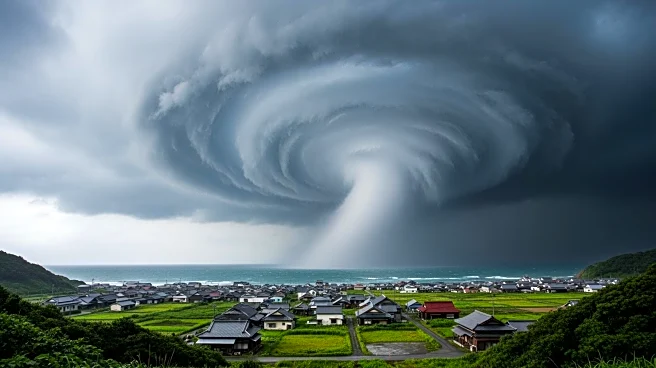What's Happening?
A powerful earthquake with a magnitude of 6.9 struck off the coast of Iwate prefecture in northern Japan on Sunday evening, prompting the Japan Meteorological Agency to issue tsunami advisories along the coast.
The earthquake occurred at a depth of 20 kilometers and was followed by several tremors. Although initial reports suggested the tsunami could reach heights of up to 3 meters, the advisory was later downgraded to a forecast, indicating a maximum height of 0.2 meters. The agency reported no immediate injuries or damage, and no abnormalities at nearby nuclear power plants. The advisory was lifted three hours after the quake, but the region remains at risk for strong quakes in the coming days.
Why It's Important?
The earthquake highlights the ongoing seismic risks faced by Japan, a country situated on the Pacific 'ring of fire' and prone to frequent earthquakes. The event serves as a reminder of the devastating 2011 earthquake and tsunami that led to a nuclear meltdown in Fukushima, causing widespread displacement and ongoing protests against nuclear power. The recent quake underscores the importance of preparedness and the need for effective early warning systems to mitigate potential damage and loss of life. It also raises concerns about the safety of nuclear facilities in earthquake-prone regions.
What's Next?
The Japan Meteorological Agency has warned that the area could experience strong quakes for about a week, particularly in the next two to three days. Residents are advised to remain vigilant and avoid coastal areas. Authorities may continue to monitor seismic activity closely and issue further advisories if necessary. The event may prompt discussions on improving infrastructure resilience and emergency response strategies in earthquake-prone areas.
Beyond the Headlines
The earthquake and subsequent tsunami advisory may reignite debates over the safety and future of nuclear power in Japan. The Fukushima disaster remains a poignant example of the risks associated with nuclear energy in seismically active regions. Public sentiment and policy decisions regarding nuclear energy could be influenced by such events, potentially leading to increased investment in alternative energy sources and stricter safety regulations.












